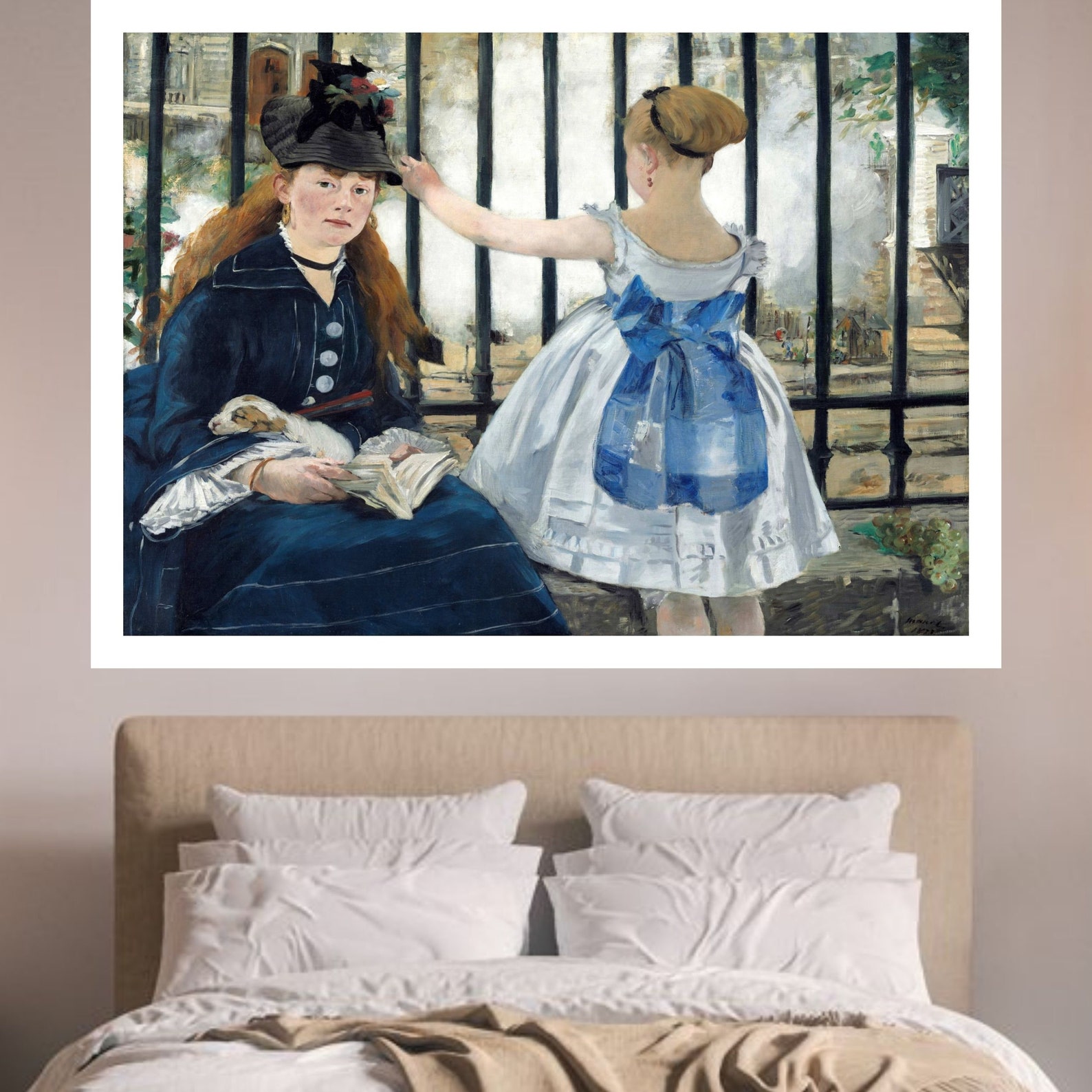

The Railway, by Edouard Manet, is an 1873 painting which is popularly known as the Gare Saint-Lazare.
#The railway manet license#
This is a part of the Wikipedia article used under the Creative Commons Attribution-Sharealike 3.0 Unported License (CC-BY-SA).National Gallery of Art, Washington, D.C. in 1956 on the death of her son Horace Havemeyer. The painting was donated to the National Gallery of Art in Washington, D.C. His wife Louisine Havemeyer left 2,000 artworks to the Metropolitan Museum of Art in New York on her death in 1929, but she divided a small collection, including The Railway, among her three children. It was sold on 31 December 1898 for 100,000 francs to American Henry Osborne Havemeyer. It was sold in 1881 for 5,400 francs to the art dealer Paul Durand-Ruel, who gave it several names: Enfant regardant le chemin de fer, Le pont de l'Europe, A la Gare St. Shortly after it was completed, the painting was sold to baritone Jean-Baptiste Faure. The painting is currently in the National Gallery of Art in Washington, D.C. Caricaturists ridiculed Manet's picture, in which only a few recognized the symbol of modernity that it has become today". Historian Isabelle Dervaux has described the reception this painting received when it was first exhibited at the official Paris Salon of 1874: "Visitors and critics found its subject baffling, its composition incoherent, and its execution sketchy. The dog may be a reference to Titian's Venus of Urbino Manet had earlier echoed Titian's composition in his Olympia. Resting on a parapet to the right of the painting is a bunch of grapes, perhaps indicating that the painting was made in the autumn.

The traditional convention of deep space is ignored. The arrangement compresses the foreground into a narrow focus, separated from the background by the row of railings. Modern apartment buildings can be seen in the background, including the house on the Rue de Saint-Pétersbourg, near the Place de l'Europe, where Manet had rented a studio since July 1872, and also a signal box and the Pont de l'Europe. The only evidence of the train is its white cloud of steam. Instead of choosing the traditional natural view as background for an outdoor scene, Manet opted for the iron grating which "boldly stretches across the canvas" (Gay 106). The black band in the girl's hair echoes the black band around the neck of the woman. Next to her is a little girl, modelled by the daughter of Manet's neighbour Alphonse Hirsch, a contrasting figure wearing a white dress with large blue bow, standing her back to the viewer, watching through the railings as a train passes beneath them.

The pensive subject is wearing a dark hat and sombre deep blue dress with white details, and is looking towards the viewer, while a sleeping puppy, a fan and an open book rest in her lap. Meurent is depicted sitting to the left side of the frame, in front of an iron fence near the Gare Saint-Lazare in Paris.

It was exhibited at the Paris Salon in 1874, and donated to the National Gallery of Art in Washington, D.C. It is the last painting by Manet of his favourite model, the fellow painter Victorine Meurent, who was also the model for his earlier works Olympia and the Luncheon on the Grass. The Railway, widely known as Gare Saint-Lazare, is an 1873 painting by Édouard Manet.


 0 kommentar(er)
0 kommentar(er)
